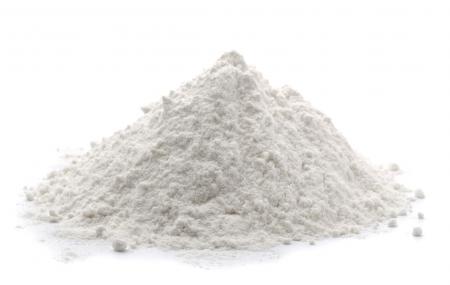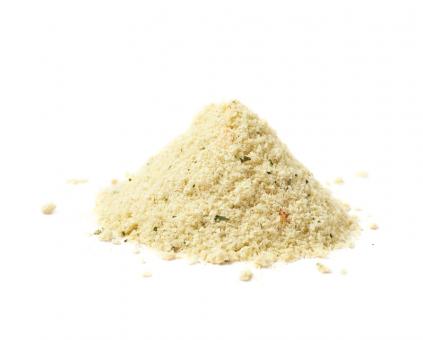Mixing powders is a complex process. This article discusses some important topics related to this topic.
The next subjects will be discussed:
- An introduction to the topic of mixing processes and mixing mechanisms
- The discussion of some mixing principles
- A summary and explanation of the three main mixing mechanisms
The experts at Dinnissen Process Technology are available to answer all your questions:
Get in touch with Juul Jenneskens 077 467 3555
The importance of mixing processes and mixing mechanisms
The final properties of many products are often largely determined by mixing processes. In many cases, the mixing process determines how the various components are distributed in the mixture. In the production of many composite products, mixing takes place before the composite products are formed. The development of an acceptable mixing quality and a sufficiently homogeneous mixed mixture is determined during the mixing phase. For example, with medicines, it must be ensured that each pill has an equal composition and that the active substances are uniformly distributed.
There is usually practical knowledge available about the way in which mixing processes should be optimally adjusted and which mixer is best to choose. Still, relatively simple operational questions remain unanswered. One reason for this is that many time-consuming experiments are required to find the optimal solution.
In general, mixing powders is mistakenly considered one of the simplest steps in the manufacturing process. Scientific knowledge regarding the behavior of powder mixtures is lacking. Powder mixtures to be mixed industrially usually consist of several components, which sometimes also consist of several components. In practice, flow diagrams only show the flow of the various components. Questions such as “What should be changed in the mixing process if the proportions of the components in the powder mixture change?”, “What happens to the quality if the speed of the mixer is increased?”, “Where can small components or liquids best be used? fed into the mixer "and" Can the mixing time be reduced if the rotation speed is increased? " often remain unanswered.
Mixing principles of powder particles
Mobility of the powder particles is necessary to effect mixing of a powder mixture. The powder particles need externally supplied energy to be able to move. Diffusion in the way that occurs in liquids does not take place in a powder mixture. The energy to set the particles in motion can be supplied in various ways. Sometimes this is done by rotating paddle shafts or a rotary stirrer that moves through the powders to be mixed, sometimes by gravity and sometimes by a combination of the two techniques. How well the mixing proceeds as a result also depends on a number of physical properties of the particles, such as friction between the particles and cohesion.
What is remarkable about powders and powder mixtures is that they can behave like a solid body, but also like a liquid or a gas. Unlike liquids, powders can simultaneously transfer force in different ways, via internal friction, Van der Waals forces, capillary forces and electrostatic force action.
Powder blends are classified into two categories: free-flowing or cohesion-driven. In practice this should be seen as a sliding scale. Cohesion decreases squarely with the size of a powder particle. Van der Waals forces and capillary action are predominant for particles smaller than 500 microns and together they increase proportionally with the diameter of the particles. It has been empirically established that for powder particles smaller than 100 micrometers, cohesion is often the most important force action and that above this limit the powder can usually be considered free-flowing. However, other powder properties also play a role in the flow properties of powders.
On a macroscopic scale, there may be smaller particles (less than 100 micrometers), with movement of the particles' force transfer by cohesion predominating. In that case, the size and shape of the particles in particular determine the flow behavior. It is important to take this into account when mixing powder particles.
Characterizing the different powder particles in a mixture is not sufficient to predict how the particles in the powder mixture will move during the mixing process. In other words: The flow behavior of a mixture of powder particles can be very different from the behavior of one of the components of the mixture. Normally, the predominant ingredient in a powder mixture determines the flow behavior, but this does not apply to all types of mixtures.
Finally, it is important to realize that during the mixing process, powder particles can change shape or start to clump together. This can change the flow behavior again.


Mixing powders is a deeply underestimated science
The three main mixing mechanisms
The operation of the mixers used in industry is almost always based on one or more of the following three types of mechanisms:
- Convection
- Diffusion
- Shear
Convection mixing means that dynamic areas of powder particles are moved through the mixer. The areas are dynamic because they are constantly changing. They are driven, for example, by mixing shafts or by centrifugal forces in a drum. Convection can rapidly decrease the degree of segregation. Large dynamic areas of powder particles will be converted into smaller ones. This creates an ever-increasing force-exchanging surface, which means that the mixing of the various ingredients will be faster and faster.
Diffusion can occur when mixing a powder mixture in much the same way as mixing liquids. In contrast to the convection described above, diffusion is a relatively slow mechanism that causes powder particles to be dispersed one by one in the mixture. Diffusion can occur if an agitator scrapes one of the particles. A number of powder particles are set in motion at the contact surface, which subsequently take up a different place in the mixture under the influence of gravity.
The third mixing mechanism is shear. If two dynamic areas of powder in a powder mixture move past each other at different speeds, shearing may occur at the contact surface of these areas. First of all, individual powder particles can transfer from one area to another independently of each other. Furthermore, the difference in speed between the different dynamic regions causes a surface tension on the interfaces. As a result of this surface tension, the dynamic areas of powder can disintegrate into pieces.
In practice, these three mixing mechanisms often occur simultaneously during mixing. There may also be a shift from one mixing mechanism to another during mixing. For example, it may occur that at the start of the mixing convection has the upper hand and that during the mixing diffusion will have an increasing share in the mixing process.
